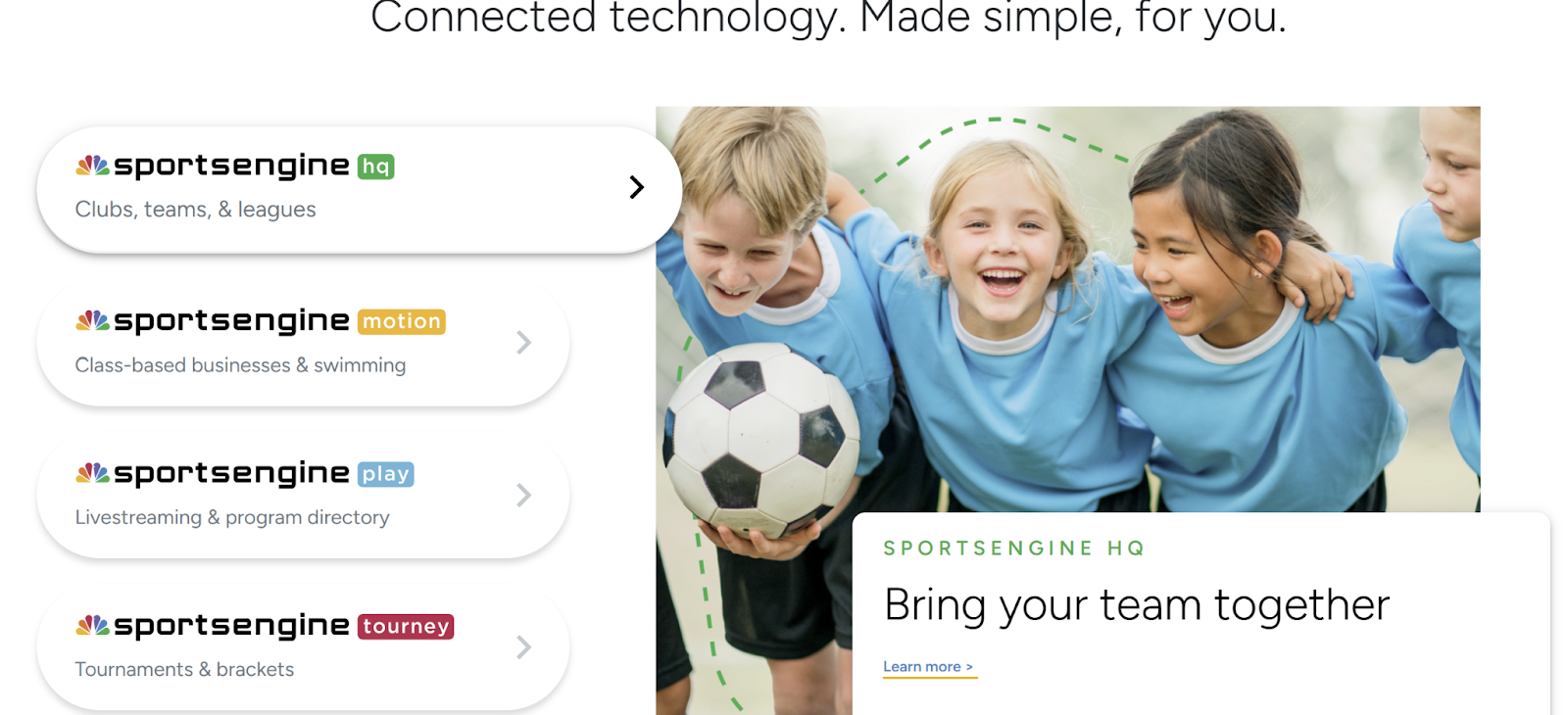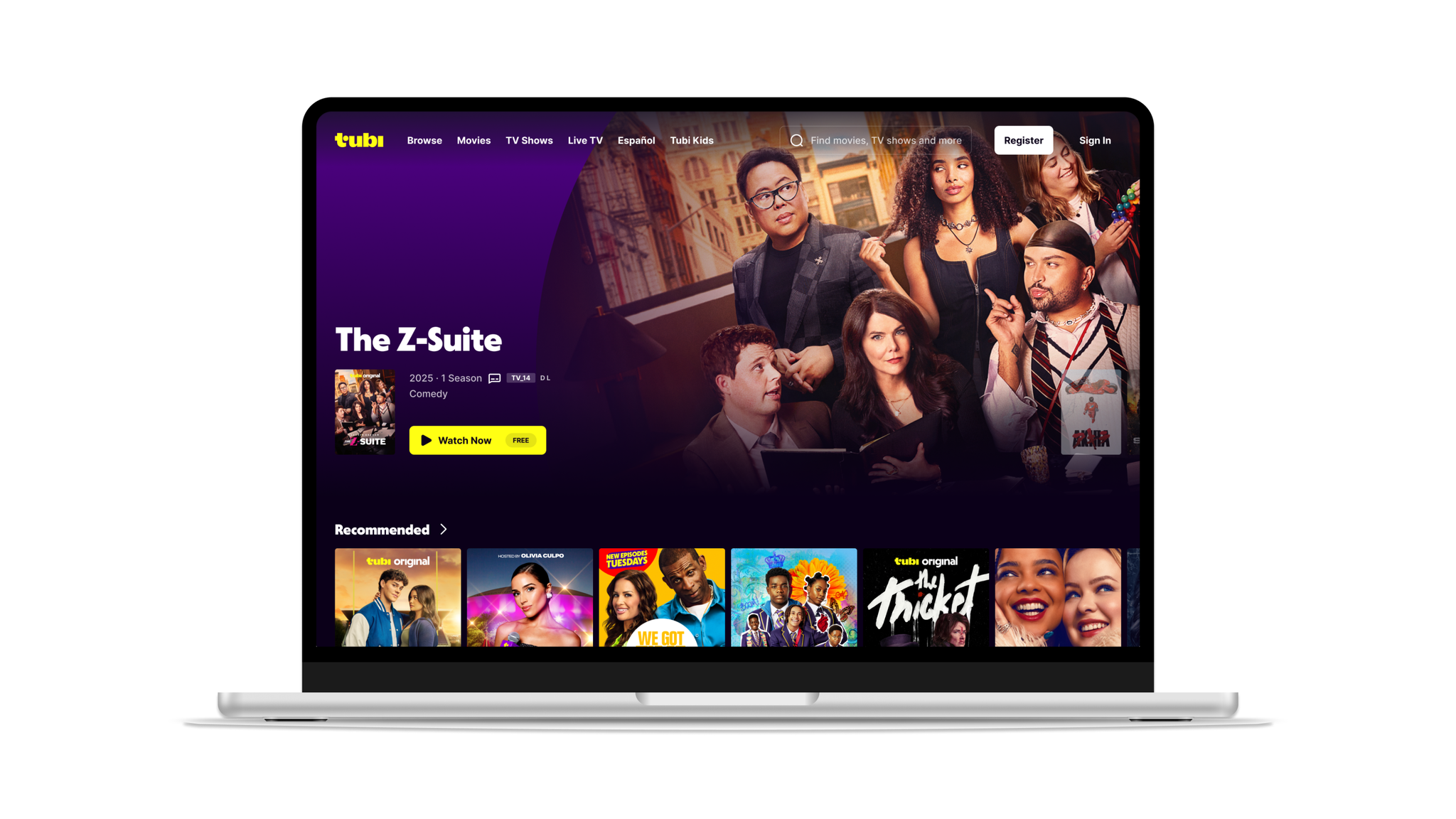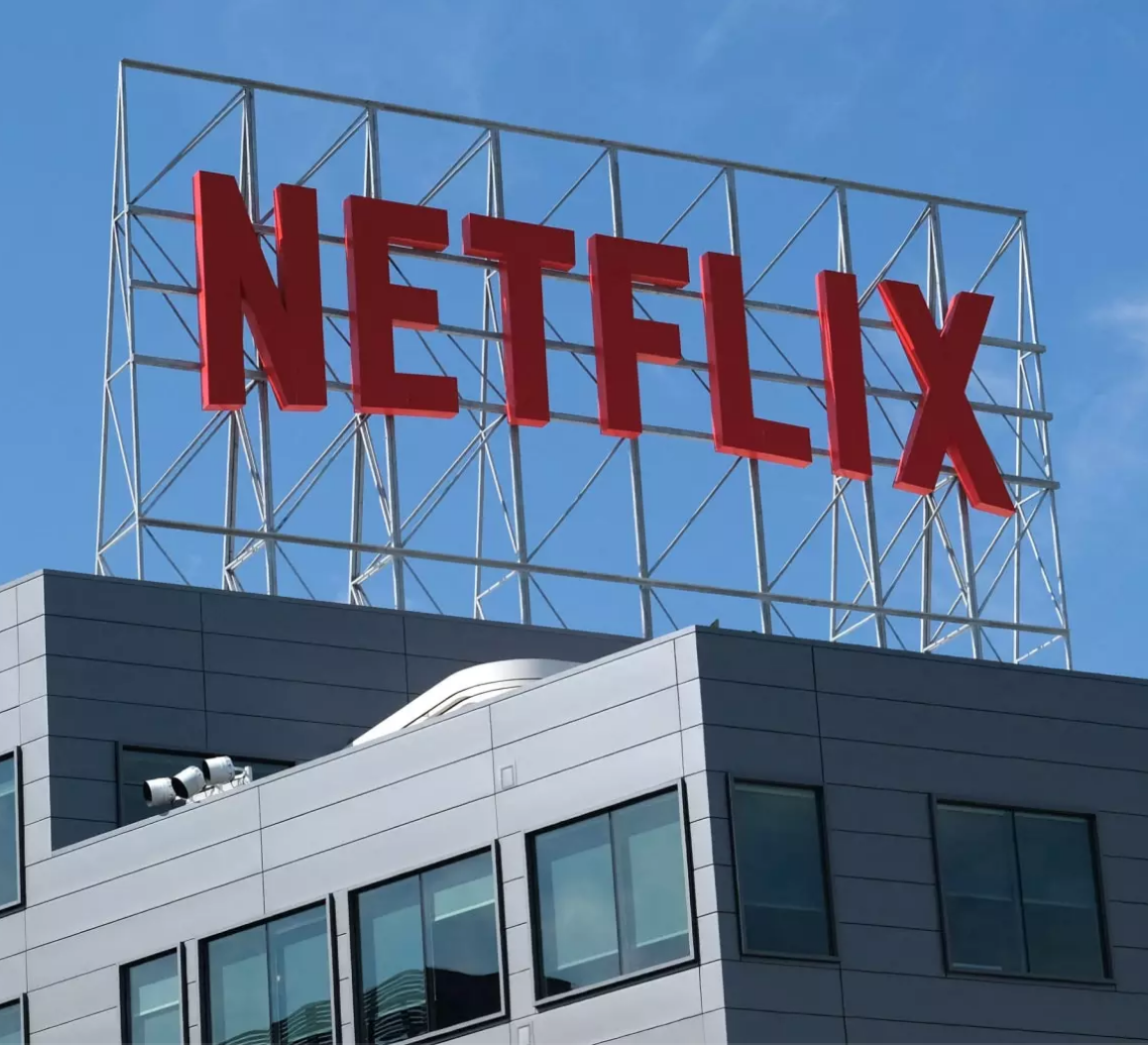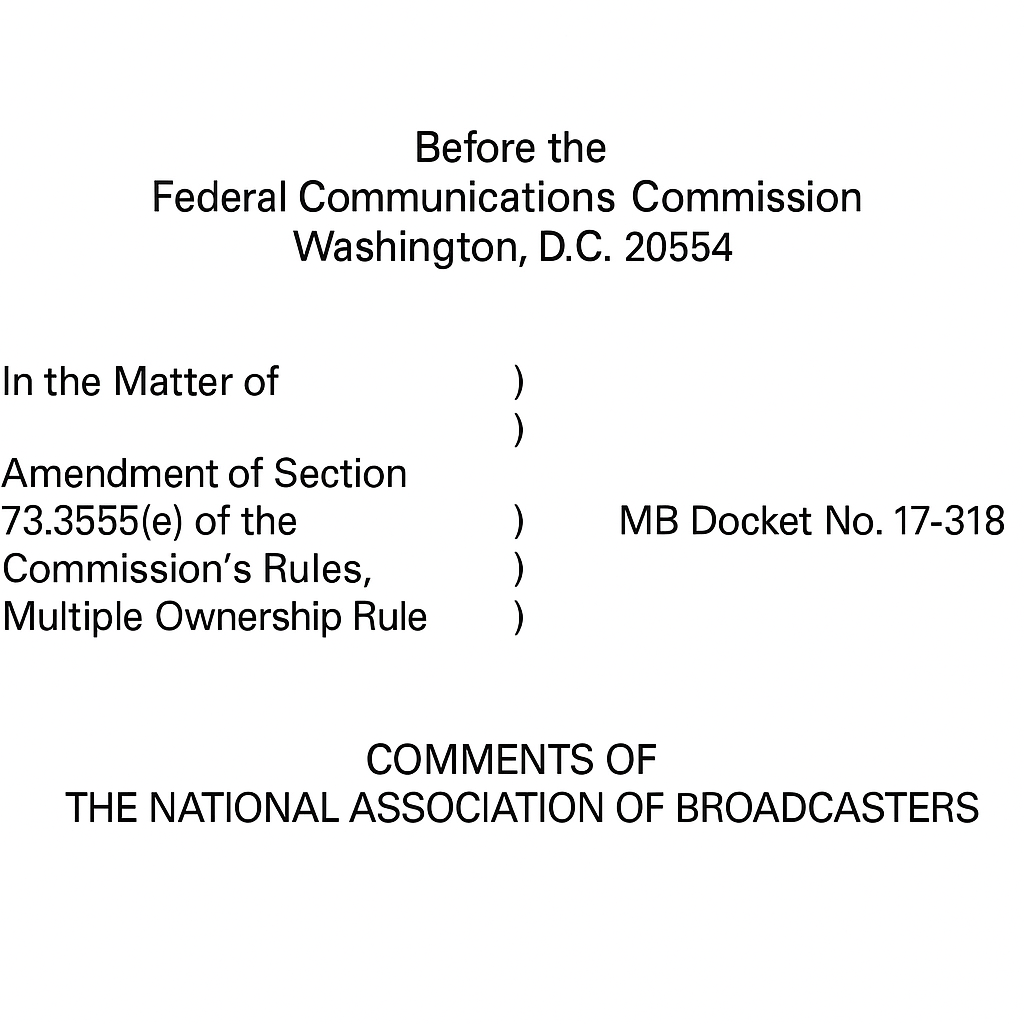Comcast Spinoff Versant to Sell SportsEngine as Cable Giants Shed Digital Assets
Comcast Spinoff Versant Eyes SportsEngine Sale as $12B Youth Sports Tech Market Enters Consolidation Phase
Move reflects broader retreat from non-core holdings as traditional media companies restructure for streaming era, with youth sports platform valued at $150-200 million
Versant, Comcast's soon-to-be-spun-off cable channel entity, is exploring the sale of youth sports management app SportsEngine, according to The Information. This move signals that the $12 billion youth sports technology market—which has exploded since the pandemic—is entering a definitive consolidation phase, while also illustrating how traditional cable operators are divesting non-core digital assets as they navigate survival strategies in the streaming era.
SportsEngine is a platform that handles communication and scheduling for youth athletic activities across sports including ice hockey, soccer, and volleyball. According to industry sources, Versant has not set a sale price. Sports industry insiders estimate SportsEngine's current value between $150 million and $200 million. Founded in 2008, the company now serves over 16 million athletes, 1.2 million teams, and 45,000 sports organizations using its software. It provides comprehensive tools including website creation for sports organizations, online registration and payment, team/player roster management, scheduling, tournament operations, and mobile communication apps.
Cable TV Decline and Restructuring: Behind Comcast's Spinoff
Comcast's Versant spinoff symbolically demonstrates the structural crisis facing the traditional cable TV industry. With the explosive rise of streaming services like Netflix, Disney+, and HBO Max, U.S. cable TV subscriptions are declining by millions annually, while advertising revenue rapidly migrates to digital platforms like YouTube and Meta.
In November 2024, Comcast announced it would separate cable news channels including CNBC, MSNBC, and USA Network, along with digital assets like SportsEngine and Rotten Tomatoes, into a standalone company called Versant to respond to these market shifts. The transaction is expected to complete in early 2026.
This was evaluated as a strategic decision for Comcast to focus on higher-growth potential businesses including the Peacock streaming service, NBC broadcast network, and Universal Studios. The cable channels being separated into Versant are still cash-generative but considered a business model without a future.
The sale exploration for SportsEngine is interpreted as Versant's move to restructure its asset portfolio, dispose of non-core digital assets, and optimize its financial structure before and after the spinoff completion. In a business structure centered on cable news channels, the youth sports management platform appears to have limited strategic synergy.
Versant is currently only exploring the sale of the SportsEngine platform, while entertainment-related digital assets like Rotten Tomatoes are excluded from potential divestiture. This selective sale strategy demonstrates that Versant prioritizes practical synergies with its cable network business and business model priorities.
Rotten Tomatoes, a film and TV content review aggregation service, is an asset with direct relevance to the entertainment content industry, enabling various forms of business linkages with cable networks including content marketing, viewer data analysis, and advertiser resources. In contrast, SportsEngine is B2B software specialized in managing organizations across various sports like ice hockey, baseball, and volleyball, with fundamentally limited connection to media content production or distribution. It's assessed as having weak strategic links to Versant's cable news channel-centered business model.
Against this backdrop, if Versant adopts a strategy of maximizing cash from the remaining value of its cable business and gradually downsizing operations post-spinoff, software platforms like SportsEngine could become burdensome due to ongoing technology investment needs and competitive response requirements. Accordingly, Versant is prioritizing the sale of only B2B solution-centered business units with minimal synergy to media content assets, while maintaining retention strategies for core entertainment and marketing platforms, thereby enhancing business model efficiency and strategic focus.
SportsEngine's Journey: From NBC's Strategic Acquisition to Sale Consideration
Founded in 2008, SportsEngine achieved a $133 million valuation in its Series D funding round in 2014, according to PitchBook data. At that time, investors focused on the digital transformation and growth potential of the youth sports market.
In 2016, NBC Sports Group, under Comcast, acquired SportsEngine for an undisclosed amount. Through this acquisition, NBC Sports pursued a strategy to strengthen vertical integration of the sports content ecosystem and secure direct touchpoints with data and communities in the youth sports market. Building on its strengths in premium sports broadcasting rights including the Olympics and NFL, NBC focused on using SportsEngine to capture future sports fan bases early, establish long-term relationship foundations with parents and athletes, and ultimately create a database for content and advertising businesses. NBC also promoted plans to expand its media platform footprint by streaming local youth sports league game footage.
However, nearly ten years after the acquisition, SportsEngine's enterprise value remains estimated at $150-200 million, representing minimal appreciation from its 2014 valuation. This suggests that SportsEngine's growth following NBC's acquisition was limited compared to the overall market expansion trajectory. Industry observers point to the possibility that strategic investment in SportsEngine and synergy creation with NBC integration were insufficient, compounded by the decline of the cable TV business model.
The $12 Billion Youth Sports Technology Market Explosion
The youth sports technology industry has grown to approximately $12 billion post-pandemic, attracting significant attention. This explosive expansion stems from several structural changes.
First, during the COVID-19 pandemic, restrictions on in-person sports activities triggered surging demand for digital management tools. As all operational stages—registration, scheduling, communication, payment—transitioned online, software solutions became essential infrastructure. Subsequently, parents, coaches, and organization administrators have all experienced efficiency and convenience, increasing dependence on digital tools.
Second, commercialization of the U.S. youth sports market is rapidly progressing. Moving beyond simple after-school hobbies to become critical pathways for college admission and athletic scholarships, parental investment scale and forms are diversifying. Spending has significantly increased for professional coaching, travel competitions, video analysis, and personal profile management, with corresponding surges in demand for related technology solutions.
Third, aggressive capital injection from private equity and venture capital is driving industry-wide growth. Recurring subscription-based stable revenue structures and high customer switching costs have made the youth sports software market an attractive sector for investors.
Boston Consulting Group (BCG) estimates that of the $12 billion market, management software segments including game scheduling, communication, facility permits, and registration payments represent approximately $10 billion in value. The remaining $2 billion centers on various ancillary services including video analysis, player evaluation, and recruiting platforms.
Industry-wide, the convergence of digital transformation, commercialization, and investment expansion is establishing the youth sports technology industry as an essential growth engine beyond simple infrastructure.
Market Consolidation Signals: Investment Surge and Platform Expansion
The current youth sports technology market is a highly fragmented structure with hundreds of competing startups. The absence of a clear market leader is paradoxically interpreted as a signal that large-scale consolidation is imminent.
A representative case occurred last week when competitor Fastbreak.ai closed a $40 million Series A funding round led by venture capital firms Greycroft and GTMfund, with participation from the NBA and NHL.
Particularly noteworthy is the direct investment by professional sports leagues NBA and NHL. This demonstrates that youth sports technology is recognized as core infrastructure beyond simple management tools—for cultivating future fans, player discovery pipelines, and building grassroots sports ecosystems. Professional leagues are pursuing long-term strategies to establish digitally connected fan relationships from youth, secure promising player data early, and strengthen ties with local sports communities.
Meanwhile, companies like Hudl, which started as player highlight video and game streaming platforms, are actively expanding into scheduling, team communication, and registration management functions, evolving into comprehensive solution providers.
This platform integration trend signifies that "all-in-one" solutions are becoming the core of competitiveness in the market. Parents, coaches, and league administrators prefer integrated platforms that can handle everything from registration to scheduling, communication, payment, and video analysis, rather than using multiple separate tools. This naturally leads to market consolidation through M&A (mergers and acquisitions).
SportsEngine's Current Position and Strategic Value
SportsEngine supplies management software to over 45,000 organizations across various sports including ice hockey, volleyball, baseball, and lacrosse. It has secured considerable trust and market position by establishing official partnerships with national governing bodies (such as USA Swimming).
This extensive customer base of 45,000 organizations is evaluated as SportsEngine's core asset. Each organization connects with an average of dozens to hundreds of parents, coaches, and athletes, with end users totaling millions. Due to youth sports characteristics, new age groups and new athletes/parents are continuously onboarded annually, automatically refreshing the platform's user base.
Partnerships with national governing bodies create powerful network effects while raising entry barriers. For example, when USA Swimming adopts SportsEngine as its official platform, all regional leagues and clubs under its umbrella operate on the same integrated system, maximizing network effects.
However, SportsEngine's recent enterprise valuation of $150-200 million represents only modest appreciation from the 2014 valuation of $133 million. Compared to the global youth sports technology market's explosive growth to $12 billion during the same period, SportsEngine appears not to have fully capitalized on market growth benefits. Industry assessments suggest that intense competition, profitability pressures, and changes including M&A and new technology development have all impacted both profitability and growth rates.
In summary, SportsEngine possesses strengths including a massive customer base, organizational network effects, and excellent brand trust, but has shown relatively limited growth within the market's overall explosive expansion.
Traditional Media's Digital Asset Restructuring: The Broader Trend
Ultimately, SportsEngine's sale consideration is an extension of the large-scale portfolio restructuring and reorganization trend appearing across the U.S. media industry. As cable TV and traditional broadcasting markets face stagnation, major media companies including Disney, Warner Bros. Discovery, and Paramount Global are aggressively pursuing streaming-centered structural transformation, cost reduction, and divestiture of non-core assets. The strategy is to divest B2B software with limited direct synergy to media and concentrate on core businesses including content production and distribution.
These changes are accelerating M&A trends within the industry, with platform and technology company acquisitions and network structure integration accelerating. Companies like SportsEngine, with large organizational customer bases and platform infrastructure, are assessed to potentially realize growth potential more rapidly with appropriate management participation and investment attraction. Indeed, if platform integration and expansion strategies based on 45,000 organizations are successfully executed, SportsEngine's market value could rise significantly above current levels.
Ultimately, within the media industry's restructuring currents, the growth potential and efficiency of the youth sports technology market, and the future competitiveness of platforms with large-scale customer infrastructure, are expected to become increasingly important.
컴캐스트 스핀오프 버산트, 청소년 스포츠앱 매각 검토...120억弗 시장 통합 본격화
컴캐스트(Comcast)의 케이블 채널 스핀오프 예정 회사인 버산트(Versant)가 청소년 스포츠 관리 앱 스포츠엔진(SportsEngine) 매각을 검토하고 있다고 디인포메이션이 보도했다. 이는 팬데믹 이후 120억 달러 규모로 급성장한 청소년 스포츠 기술 시장이 본격적인 통합 국면에 접어들고 있다는 신호이자, 전통 케이블 사업자들이 스트리밍 시대에 비핵심 디지털 자산을 정리하며 생존 전략을 모색하고 있음을 보여주는 최근 사례다.
스포츠엔진은 아이스하키, 축구, 배구 등 다양한 종목에서 청소년 운동 활동의 커뮤니케이션과 일정 관리를 담당하는 플랫폼이다. 업계에 따르면 버산트(Versant)는 매각 가격이 정해지지 않은 것으로 알려졌다. 스포츠 업계는 현재 스포츠엔진의 가치를 1억 5,000만 달러에서 2억 달러 사이로 추정했다. 이 회사는 2008년에 설립돼 1600만 명 이상의 선수, 120만 개 팀, 45,000개 이상의 스포츠 조직이 SportsEngine의 소프트웨어를 사용하고 있다. 스포츠 조직을 위한 웹사이트 제작, 온라인 참가 등록 및 결제, 팀/선수 명단 관리, 일정 관리, 대회 운영, 모바일 커뮤니케이션 앱 등 종합적인 도구를 제공한다.

케이블TV 쇠퇴와 구조조정: 컴캐스트 스핀오프의 배경
컴캐스트의 버산트 스핀오프는 전통 케이블TV 산업이 직면한 구조적 위기를 상징적으로 보여준다. 넷플릭스(Netflix), 디즈니+(Disney+), HBO 맥스(Max) 등 스트리밍 서비스의 급부상으로 미국 케이블TV 가입자 수는 매년 수백만 명씩 감소하고 있으며, 광고 수익도 유튜브(YouTube), 메타(Meta) 등 디지털 플랫폼으로 급속히 이동하고 있다.
지난 2024년 11월 컴캐스트는 이러한 시장 변화에 대응하기 위해 CNBC, MSNBC, USA 네트워크(USA Network) 등 케이블 뉴스 채널과 함께 스포츠엔진, 로튼 토마토(Rotten Tomatoes) 같은 디지털 자산을 버산트라는 별도 회사로 분리하겠다고 발표했다. 이 거래는 2026년 초 완료된다.
이는 컴캐스트가 피콕(Peacock) 스트리밍 서비스와 NBC 방송 네트워크, 유니버설 스튜디오(Universal Studios) 등 성장 가능성이 높은 사업에 집중하기 위한 전략적 결단으로 평가받았다. 버산트로 분리되는 케이블 채널들은 여전히 현금 창출력은 있지만 미래가 없는 사업 모델로 간주되고 있다.
스포츠엔진에 대한 매각 검토는 버산트가 스핀오프 완료 전후로 자산 포트폴리오를 재구성하고 비핵심 디지털 자산을 처분하며 재무 구조를 최적화하려는 움직임으로 해석된다. 케이블 뉴스 채널 중심의 사업 구조에서 청소년 스포츠 관리 플랫폼은 전략적 시너지가 제한적이라는 판단이 작용한 것으로 보인다.
버산트(Versant)는 현재 스포츠엔진(SportsEngine) 플랫폼의 매각만을 검토하고 있으며, 로튼 토마토(Rotten Tomatoes) 등 엔터테인먼트 관련 디지털 자산은 매각 대상에서 제외하고 있다. 이러한 선택적 매각 전략은 버산트가 케이블 네트워크 비즈니스의 실질적 시너지와 사업 모델의 우선순위를 중시하고 있음을 방증한다.
영화 및 TV 콘텐츠 리뷰 집계 서비스인 로튼 토마토는 엔터테인먼트 콘텐츠 산업과 직접적인 연관성을 가진 자산으로, 케이블 네트워크와 함께 콘텐츠 마케팅, 시청자 데이터 분석, 광고주 대상 자료 제공 등 다양한 형태의 사업 연계가 가능하다. 반면 스포츠엔진은 아이스하키, 야구, 배구 등 다양한 스포츠 조직 관리에 특화된 B2B 소프트웨어로, 미디어 콘텐츠 제작이나 배급과는 본질적으로 관련성이 적다. 케이블 뉴스 채널 중심의 버산트 사업 모델과도 전략적 연결고리가 약하다는 평가다.
이러한 배경에서 버산트가 스핀오프 후 케이블 사업의 잔존 가치를 최대한 현금화하며 점진적으로 사업을 축소하는 전략을 채택할 경우, 스포츠엔진과 같은 소프트웨어 플랫폼은 지속적 기술 투자와 경쟁 대응 필요성으로 인해 부담 요인이 될 수 있다. 이에 따라, 버산트는 미디어 콘텐츠 자산과 시너지가 적은 B2B 솔루션 중심 사업부만을 우선 매각하며, 핵심 엔터테인먼트·마케팅 플랫폼은 보유 전략을 유지함으로써 사업 모델의 효율성과 전략적 집중도를 높이고 있다.
스포츠엔진의 여정: NBC의 전략적 인수에서 매각 검토까지
2008년에 설립된 스포츠엔진(SportsEngine)은 2014년 피치북(PitchBook) 데이터 기준 시리즈 D 투자에서 1억 3,300만 달러의 기업가치를 인정받았다. 당시 투자자들은 청소년 스포츠 시장의 디지털 전환과 성장 잠재력에 주목했다.
2016년, 컴캐스트 산하의 NBC 스포츠 그룹(NBC Sports Group)은 스포츠엔진을 비공개 금액에 인수했다. 이번 인수를 통해 NBC 스포츠는 스포츠 콘텐츠 생태계의 수직 통합을 강화하고, 청소년 스포츠 시장에서 데이터와 커뮤니티에 대한 직접적인 접점을 확보하는 전략을 진행했다. NBC는 올림픽, NFL 등 프리미엄 스포츠 중계권을 보유한 강점을 바탕으로 스포츠엔진을 통해 미래 스포츠 팬층을 조기에 확보하고, 학부모와 선수들과의 장기적인 관계 기반을 구축하며, 궁극적으로 콘텐츠 및 광고 사업의 데이터베이스를 만드는 데 집중했다. 또한 지역 청소년 스포츠 리그의 경기 영상을 스트리밍하여 미디어 플랫폼 입지도 확대하려는 구상도 추진했다.
하지만 인수 이후 약 10년이 지난 현재, 스포츠엔진은 1억 5,000만~2억 달러로 추정되는 기업가치에 머물러 2014년 평가액 대비 크게 상승하지 않았다. 이는 NBC 인수 이후 스포츠엔진의 성장이 시장 전체 확장 추이에 비해 한정적이었음을 시사한다. 업계에서는 케이블TV 사업 모델의 쇠퇴가 맞물리며, 스포츠엔진에 대한 전략적 투자 및 NBC와의 통합 시너지 창출이 충분히 이루어지지 못했을 가능성도 지적된다.
120억 달러로 폭발한 청소년 스포츠 기술 시장
팬데믹 이후 청소년 스포츠 기술 산업이 약 120억 달러 규모로 성장하며 높은 주목을 받고 있다. 이러한 폭발적 확대는 몇 가지 구조적 변화에 기인한다.
첫째, 코로나19 팬데믹 기간 동안 대면 스포츠 활동이 제한되면서 디지털 관리 도구에 대한 수요가 급증했다. 등록, 일정 관리, 커뮤니케이션, 결제 등 운영의 모든 단계가 온라인으로 전환됨에 따라 소프트웨어 솔루션이 필수 인프라로 자리매김했다. 이후 학부모, 코치, 단체 운영자 모두가 효율성과 편의성을 경험하며 디지털 도구에 대한 의존도를 높이고 있는 상황이다.
둘째, 미국 청소년 스포츠 시장의 상업화가 빠르게 진행되고 있다. 단순한 방과후 취미를 넘어 대학 입학과 체육 장학금 획득의 중요한 경로로 여겨지면서, 학부모들의 투자 규모와 형태가 다변화되고 있다. 전문 코칭, 원정 경기, 영상 분석, 개인 프로필 관리 등에 대한 지출이 크게 증가하며 관련 기술 솔루션에 대한 수요도 동반 급증했다.
셋째, 사모펀드와 벤처캐피털의 적극적인 자금 투입이 산업 전반의 성장을 견인하고 있다. 반복 구독 기반의 안정적 매출 구조와 높은 고객 전환 비용 등은 청소년 스포츠 소프트웨어 시장을 투자자들에게 매력적인 분야로 만들었다.
보스턴컨설팅그룹(BCG)은 120억 달러 시장 중 경기 일정 관리, 커뮤니케이션, 경기장 허가, 등록비 결제 등 관리 소프트웨어 부문의 가치를 약 100억 달러로 추산했다. 나머지 20억 달러는 영상 분석, 선수 평가, 리크루팅 플랫폼 등 다양한 부가 서비스를 중심으로 형성되어 있다.
산업 전반적으로 디지털 전환, 상업화, 투자 확대가 맞물리며 청소년 스포츠 기술 산업이 단순 인프라를 넘어 필수 성장 동력으로 자리매김하고 있다.
시장 통합의 신호: 투자 급증과 플랫폼 확장
현재 청소년 스포츠 기술 시장은 수백 개의 스타트업이 경쟁하는 매우 분산된(fragmented) 구조다. 아직 명확한 시장 지배자가 나타나지 않았다는 것은, 역설적으로 대규모 통합이 임박했다는 신호로 해석된다.
지난주 경쟁사 중 하나인 패스트브레이크AI(Fastbreak.ai)가 벤처캐피털 그레이크로프트(Greycroft)와 GTM펀드(GTMfund)가 주도하고 NBA와 NHL도 참여한 4,000만 달러 규모의 시리즈 A 펀딩을 마감한 것이 대표적 사례다.
특히 주목할 점은 프로 스포츠 리그인 NBA와 NHL의 직접 투자다. 이는 청소년 스포츠 기술이 단순한 관리 도구를 넘어 미래 팬 육성, 선수 발굴 파이프라인, 풀뿌리 스포츠 생태계 구축의 핵심 인프라로 인식되고 있음을 보여준다. 프로 리그들은 청소년기부터 디지털로 연결된 팬 관계를 구축하고, 유망 선수 데이터를 조기에 확보하며, 지역 스포츠 커뮤니티와의 유대를 강화하려는 장기 전략을 추진하고 있다.
한편 선수 하이라이트 영상과 경기 스트리밍 플랫폼으로 출발한 허들(Hudl) 같은 기업들도 현재 일정 관리, 팀 커뮤니케이션, 등록 관리 기능으로 사업 영역을 적극 확장하며 종합 솔루션 제공자로 진화하고 있다.
이러한 플랫폼 통합 트렌드는 시장에서 "올인원(all-in-one)" 솔루션이 경쟁력의 핵심이 되고 있음을 의미한다. 학부모와 코치, 리그 운영자들은 여러 개의 개별 도구를 사용하기보다는 등록부터 일정 관리, 커뮤니케이션, 결제, 영상 분석까지 모두 처리할 수 있는 통합 플랫폼을 선호한다. 이는 자연스럽게 M&A(인수합병)를 통한 시장 통합으로 이어질 수밖에 없다.
스포츠엔진의 현재 위상과 전략적 가치
스포츠엔진(SportsEngine)은 아이스하키, 배구, 야구, 라크로스 등 다양한 스포츠 분야에서 45,000개 이상의 조직에 관리 소프트웨어를 공급하고 있다. 특히 미국 국가단체(USA Swimming 등)와의 공식 파트너십을 맺으며 시장 내 상당한 신뢰도와 입지를 확보 중이다.
이러한 45,000개 조직이라는 광범위한 고객 기반은 스포츠엔진의 핵심 자산으로 평가된다. 각 조직은 평균 수십~수백 명의 학부모, 코치, 선수와 연결돼 있으며, 최종 사용자는 수백만 명에 달한다. 청소년 스포츠 특성상 해마다 새로운 연령대, 신규 선수·학부모가 지속적으로 유입돼, 플랫폼의 사용자 기반은 자동적으로 갱신된다.
국가 관장 단체와의 파트너십은 강력한 네트워크 효과와 함께 진입 장벽을 높인다. 예를 들어, USA 수영이 스포츠엔진을 공식 플랫폼으로 채택하면 산하 모든 지역 리그와 클럽들이 같은 시스템으로 통합 운영되면서 네트워크 효과가 극대화된다.
그러나 1억 5,000만~2억 달러로 추정되는 스포츠엔진의 최근 기업가치는, 2014년 1억 3,300만 달러 대비 큰 폭의 상승세는 아니다. 같은 기간 글로벌 청소년 스포츠 기술 시장이 120억 달러 규모로 급성장한 것과 비교하면, 스포츠엔진은 시장 성장의 과실을 충분히 누리지 못한 모습이다. 업계에서는 경쟁 치열과 수익성 압박, 그리고 M&A와 신기술 개발 등의 변화가 수익성과 성장률 모두에 영향을 미쳤다는 평가도 나온다.
요약하자면, 스포츠엔진은 거대한 고객 기반과 단체 네트워크 효과, 우수한 브랜드 신뢰도 등 강점을 갖추고 있으나, 시장 전체의 폭발적 성장세 내에서는 상대적으로 제한된 외형 성장을 보여주고 있다.
전통 미디어의 디지털 자산 재편: 더 큰 트렌드
결론적으로, 스포츠엔진(SportsEngine)의 매각 검토는 미국 미디어 산업 전반에 나타나고 있는 대규모 포트폴리오 재편과 구조조정 트렌드의 연장선상에 있다. 케이블TV·전통 방송 시장이 침체를 겪으면서, 디즈니·워너브러더스 디스커버리·파라마운트 글로벌 등 주요 미디어 기업들은 스트리밍 중심의 구조 전환, 비용 절감, 비핵심 자산의 매각에 적극적으로 나서고 있다. 미디어와 직접적 시너지 효과가 제한적인 B2B 소프트웨어는 매각 대상으로 삼고, 콘텐츠 제작 및 유통 등 핵심 사업에 집중하는 전략이다.
이러한 변화는 산업 내 M&A 트렌드를 촉진하고 있으며, 플랫폼·기술 기업과의 인수합병, 네트워크 구조 통합이 가속화되고 있다. 스포츠엔진처럼 대규모 조직 고객과 플랫폼 인프라를 갖춘 기업은 적절한 경영 참여와 투자 유치 시 성장 잠재력이 더욱 빠르게 발휘될 수 있다는 평가다. 실제로, 45,000개 조직 기반의 플랫폼 통합·확장 전략이 성공적으로 추진될 경우, 스포츠엔진의 시장 가치는 현재보다 크게 상승할 수 있다.
결국 미디어 산업의 구조조정 흐름 속에서, 청소년 스포츠 기술 시장의 성장성과 효율성, 그리고 대규모 고객 인프라를 보유한 플랫폼의 미래 경쟁력은 앞으로 더욱 중요해질 전망이다.



![[NAB2025 NYC]The News Streaming Era Opened by FAST Channels: A New Breakthrough for Korea’s local TV](https://cdn.media.bluedot.so/bluedot.kentertechhub/2025/10/9vbnvl_202510251823.jpg)


![[모집]1월 9일~14일 글로벌 AI 스템 캠프(자료집)](https://cdn.media.bluedot.so/bluedot.kentertechhub/2025/11/3kf0x5_202511031830.png)
![[보고서]Local Television in
the Age of Streaming](https://cdn.media.bluedot.so/bluedot.kentertechhub/2025/10/hm4f5u_202510301923.png)
![[MIPCOM2025]글로벌 엔터테인먼트 트렌드](https://cdn.media.bluedot.so/bluedot.kentertechhub/2025/10/duxlsp_202510170000.png)
![[보고서]생성AI와 애니메이션](https://cdn.media.bluedot.so/bluedot.kentertechhub/2025/09/c49fxu_202509271057.png)
![[Samsung Ads] State of CTV July 2025](https://cdn.media.bluedot.so/bluedot.kentertechhub/2025/09/zhhtoy_202509140022.png)
![[Report] ‘STATE OF SUBSCRIPTIONS Specialty SVOD 2025’](https://cdn.media.bluedot.so/bluedot.kentertechhub/2025/09/mxdd6n_202509080356.png)



![[보도자료]Kocowa, 유럽 진출 1년 성과](https://cdn.media.bluedot.so/bluedot.kentertechhub/2025/07/d4i5qa_202507142153.png)